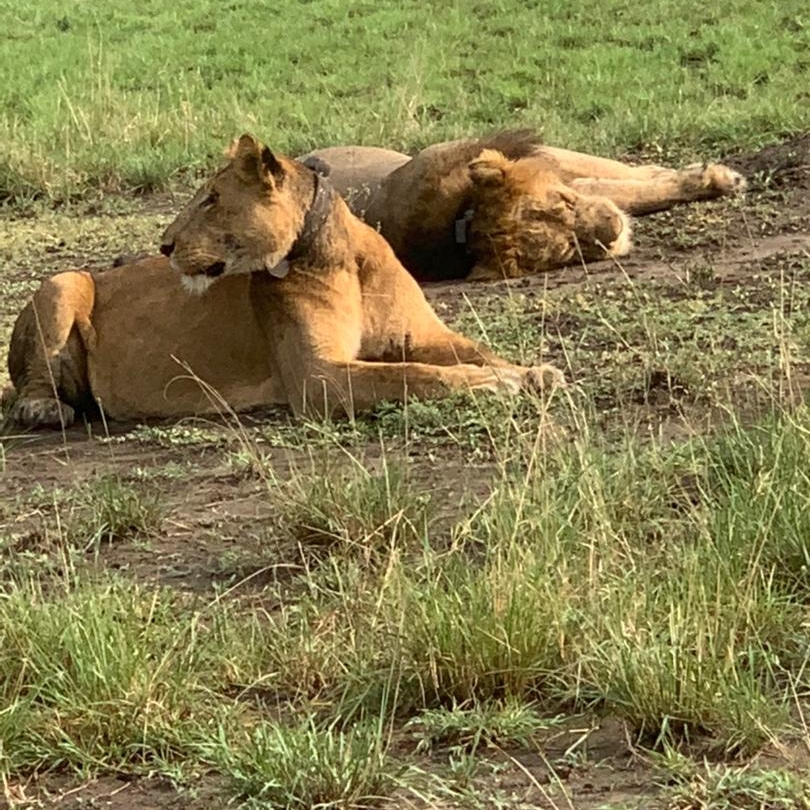Explore the Untamed Wilderness of Katavi National Park
Katavi National Park is a Tanzanian National Park created in 1974 and is locate in Kitavi region. It is a very remote park that is less frequently visited than other National Parks in Tanzania. It is approximately 4,471 sq kilometers which makes it the third largest National Park in Tanzania. It is located within an extension of the Rift Valley between Lake Rukwa and Lake Tanganyika in southwest Tanganyika. The Park encompasses the Katuma River, the seasonal Lake Katavi and Lake Chada flood plains. This park comprises of a number of wildlife such as Cape Buffaloes, Zebras, giraffes elephants, crocodiles and hippopotamus along the Katuma river. Carnivorous animals that roam this park are cheetahs, wild dogs, hyenas, leopards and lions.
Katuma River is home to the country’s densest concentration of crocodiles and hippos. During the dry season, hundreds of hippos are confined to shallow mud pools and impressive yet deadly confrontations often break out between males seeking to establish their territory. The park’s wetland areas also stand out for their astonishing birdlife, with aquatic species ranging from open-billed and saddle-billed storks to African spoonbills and pink-backed pelicans. Forest specials like the African paradise fly-catcher and the African golden oriole can also be spotted in the woodland areas, while raptors including fish eagles and bateleur eagles are common. In total, more than 400 avian species have been recorded at Katavi.
Game Viewing
Katavi is famous for its vast herds of plains animals, including some of the biggest concentrations of elephants and Cape buffalo in Tanzania. In the drier months, more than 4,000 elephants have been known to converge on the banks of the Katuma River in search of life-giving water. Other herbivores include zebras, wildebeest, giraffes, and many different kinds of antelope. Keep a particular eye out for the elusive roan and sable antelopes, and the rare Defassa waterbuck. Carnivores are attracted by the park’s abundance of prey and include lions, leopards, cheetah, and spotted hyenas. Wild dogs live in the park but mainly stay on the escarpment and are therefore rarely seen. Therefore, Game drives in an open-sided safari vehicle are the most popular method of looking for animals, including night drives when the animals are most active.
Hiking
For true hiking enthusiasts, there’s a 10-mile trail through the park’s forests that leads to a scenic viewpoint overlooking the Rukwa Valley and passes by no less than three waterfalls. The best time to hike is in May at the beginning of the dry season when the waterfalls are still roaring but you don’t have to deal with storms affecting your trek.
Cultural visit
If you have an interest in local culture, be sure to visit the sacred tamarind tree near Lake Katavi. It is said to be inhabited by the spirit of a legendary hunter, Katabi, after whom the park is named.
Accessibility to the Park
Getting to Katavi for visitors will be arranged by the hosting camp with one of the available charter flight services being the Mbali Mbali Shared Charter operated by Zantas Air Services. All flights will require landing on a dirt airstrip, the Ikuu airstrip has minimal services. It is a 3 hours’ flight from Katavi to Dar es Salaam and 2 hours’ flight to Mwanza via a small, bush compatible light aircraft. Due to the difficulty of getting to Katavi by road, most visitors choose to fly in to one of the airstrips in the park. Domestic flights will usually be arranged by your lodge and several of them include the price in their rates. If you’re looking for your own transportation, one option is Safari Air Link which connects to Katavi from Dar es Salaam or Arusha. None of these flights are a cheap option, but the expense is what makes Katavi such an exclusive destination.
Accommodation
There are a couple of campgrounds operated by the national park that include campsites for tent camping or banda accommodations, which are small huts with very basic amenities. To make a reservation at one of these campsites, you have to contact directly Tanzania National Park Association (TANAPA). Due to the logistics of setting up camp in such a remote location, there are only a handful of permanent and seasonal lodges to choose from in Katavi. Even though you may be sleeping in a tent structure outdoors, these “camps” are luxury accommodations and, in general, the rates also include transportation, all of your meals, and daily safari drives.
Mbali Mbali Katavi Lodge is located in the center of the park, with 10 luxury safari tents overlooking Katisunga plain. All-inclusive rates include two game drives per day with the option of an additional night drive. This is a great family option since kids of all ages are welcome.
Katavi Wildlife Camp sits on the edge of Katisunga plain and comprises six Meru-style tents, each with an en-suite bathroom and a private veranda with a hammock and chairs. Guests can take part in twice-daily game drives and swap tales over dinner at the restaurant.
Chada Katavi enjoys the shade of a grove of tamarind trees on the edge of Chada plain. The camp, open during the dry season only, includes six canvas tents and an officer’s mess for dining and socializing. Activities include game drives, bush walks, and fly camping (the magical experience of sleeping out under the African stars).
